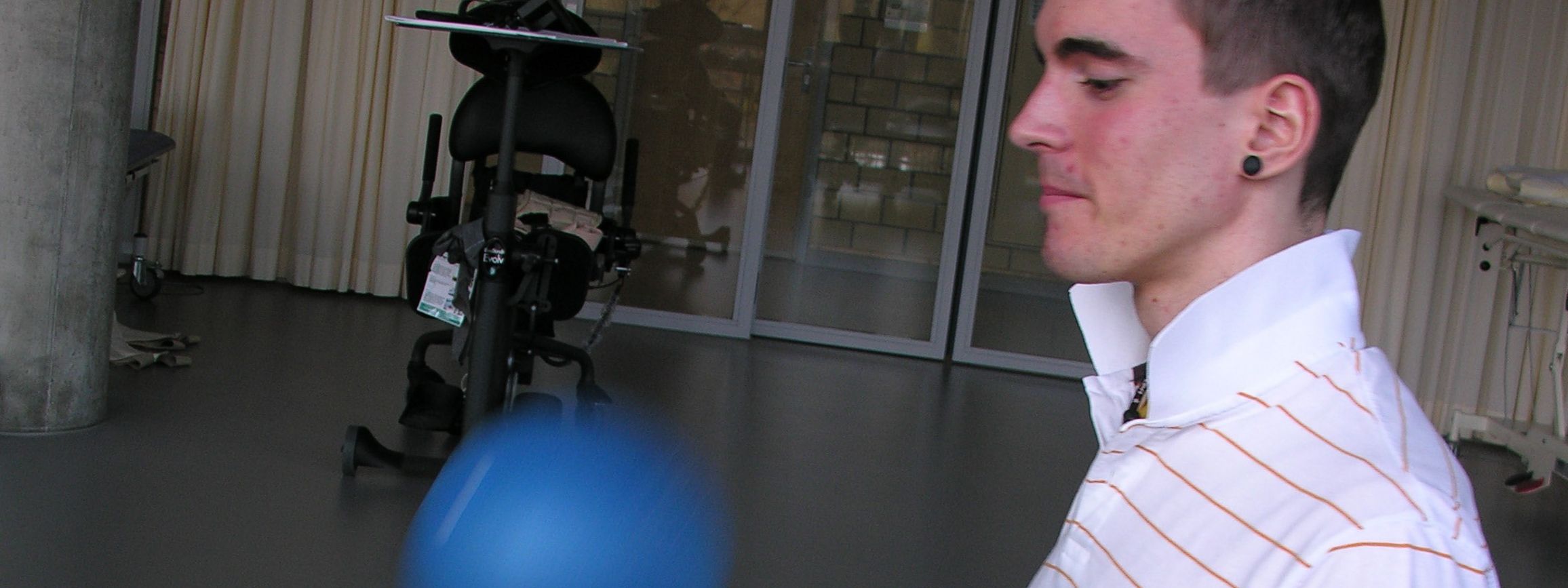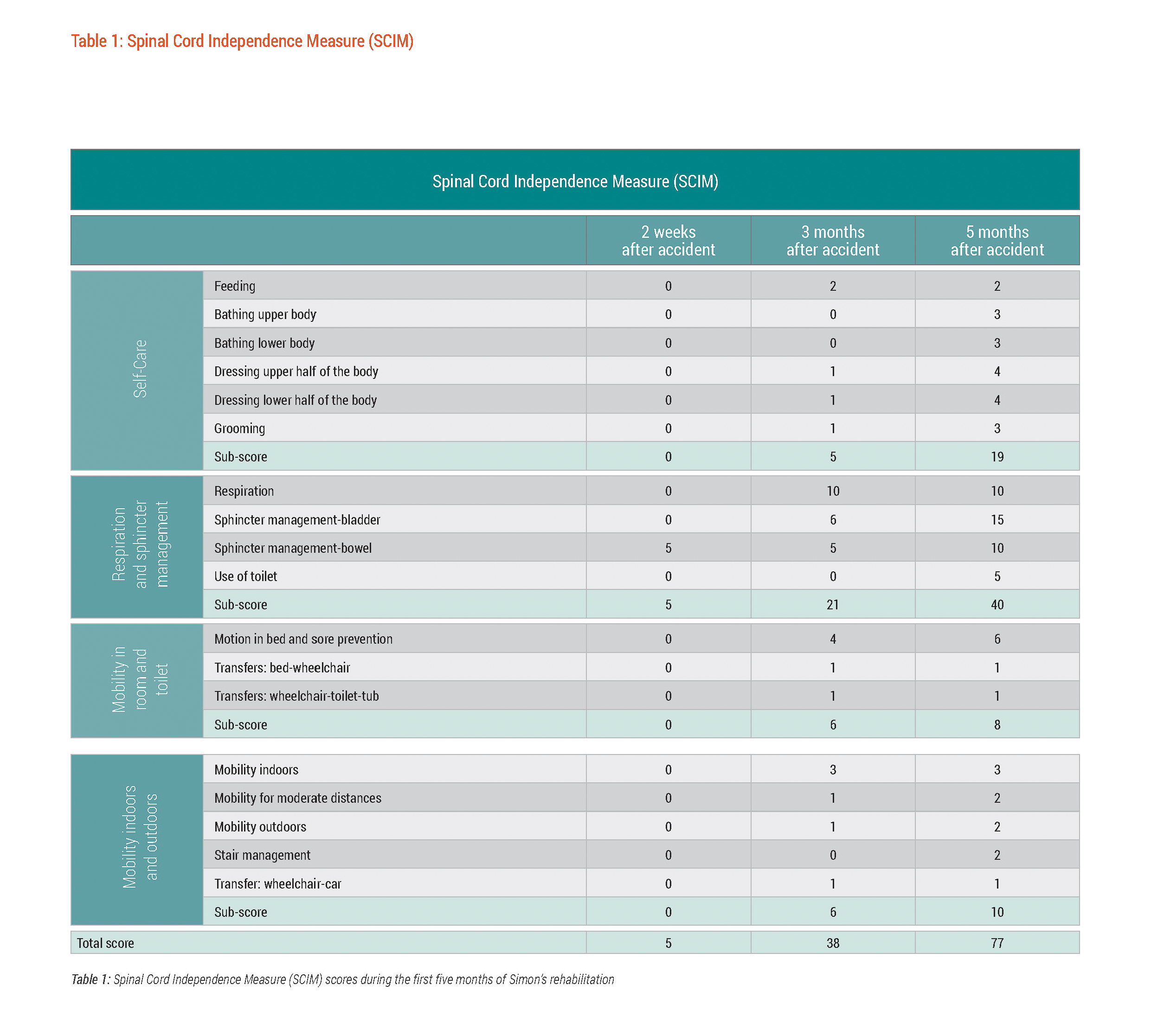Simon's Story

I’ve learned so much over the past six months – my injury has actually turned into a real opportunity for me.
Simon
This statement is a reflection of Simon’s personality. An optimistic and motivated 22-year-old, Simon was at the beginning of a promising career as a web graphic designer before his spinal cord injury (SCI). He had a large circle of friends with whom he often went mountain-biking in the countryside and dancing on weekends. In 2007, he went on vacation with a group of close friends to Mallorca, Spain. It was during this vacation that he incurred a fracture of his second cervical vertebrae as a result of a swimming accident. The second cervical vertebrae is the location of critical life functions.
After the evacuation of Simon from the accident site, he was diagnosed with type II dens fracture at the protrusion of the neck where it joins the main body of the vertebrae. Simon was stabilised and treated conservatively until arrangements were made for his safe transport to a SCI centre in his home country of Switzerland. Once in Switzerland, he was admitted to the intensive care unit of the SCI centre, and was initially diagnosed with complete sub-C2 tetraplegia ASIA A, meaning a severe SCI in which he had a complete lack of motor and sensory functions below his injury. The medical team opted for surgery to stabilise the fracture. The surgery was performed successfully, and Simon’s rehabilitation began.
""...he incurred a fracture of his second cervical vertebrae as a result of a swimming accident. The second cervical vertebrae is the location of critical life functions.""
The First Five Months
After the surgery, Simon was moved to the early post-acute unit. During the first two weeks Simon found himself completely dependent on others in all respects. He was on an artificial ventilator 24 hours a day, and received only intravenous nutrition. He was able to move only his eyes and mouth, and wore a stiff Philadelphia (neck) collar in the first six weeks to immobilise his neck and cervical region.
I felt my recovery proceed almost on a daily basis. There were no huge steps, but rather small and continuous improvements.
Simon
After six weeks, his respiratory function had improved significantly, and he required artificial ventilation only at night. Furthermore his stiff neck collar was replaced by a flexible collar that he wore for an additional four weeks. Simon’s continuous improvement was captured in his ever-increasing scores on the spinal cord independence measure (SCIM),23 over the course of the rehabilitation process. See table 1.

Table 1: Spinal Cord Independence Measure (SCIM) scores during the first five months of Simon’s rehabilitation
During the first five-month period, Simon’s physical functioning steadily improved, and he achieved a degree of independence in self-care. To support his recovery in walking, the rehabilitation team initiated regular locomotor training three months after his accident. See box 3.
Box 3 | Locomotor Training – Body Weight-Supported Treadmill Training (BWSTT)
Locomotor training utilises limb movements to produce locomotive sensory information that can promote the recovery of walking ability in persons with SCI. Locomotor training that employs treadmill training is often combined with body weight support; this is called body weight-supported treadmill training or BWSTT. In BWSTT the amount of body weight a person places on certain weight-bearing muscles is controlled by an overhead harness system while the person walks on the treadmill. For example, the body weight support decreases the weight placed on the legs and enables the retraining of various elements of a person's gait. Other interventions include locomotor training combined with electrical stimulation-assisted walking, biofeedback and passive mechanical orthoses.9121415
Although locomotor training has shown to be successful in accelerating recovery of walking ability as well as improving the quality of locomotor pattern in animal studies, results in humans are still inconclusive. However, locomotor training has shown some promise as an intervention in rehabilitation.121415
Despite improvements in Simon’s gait patterns, gait continued to be a limiting factor in walking. However, after five months of rehabilitation, Simon was able to stand with some support and even take a few steps forward. In light of Simon's progress in recovering some of his walking ability, he and his rehabilitation team looked forward to the next stage of rehabilitation. With focus on further improving Simon's ability to walk the next stage of rehabilitation employed the Rehab-Cycle® approach.